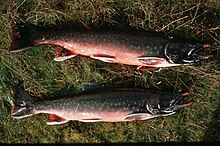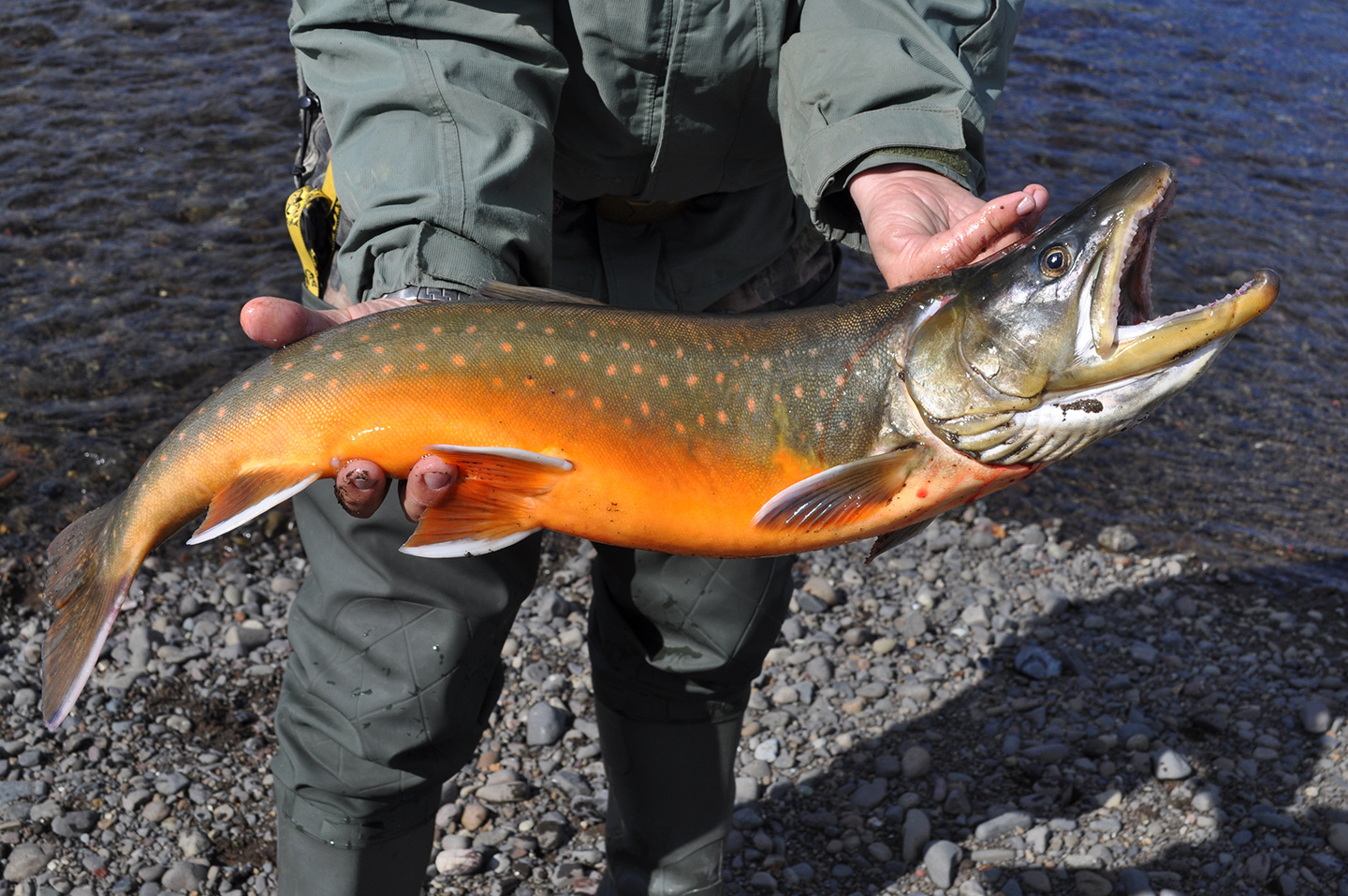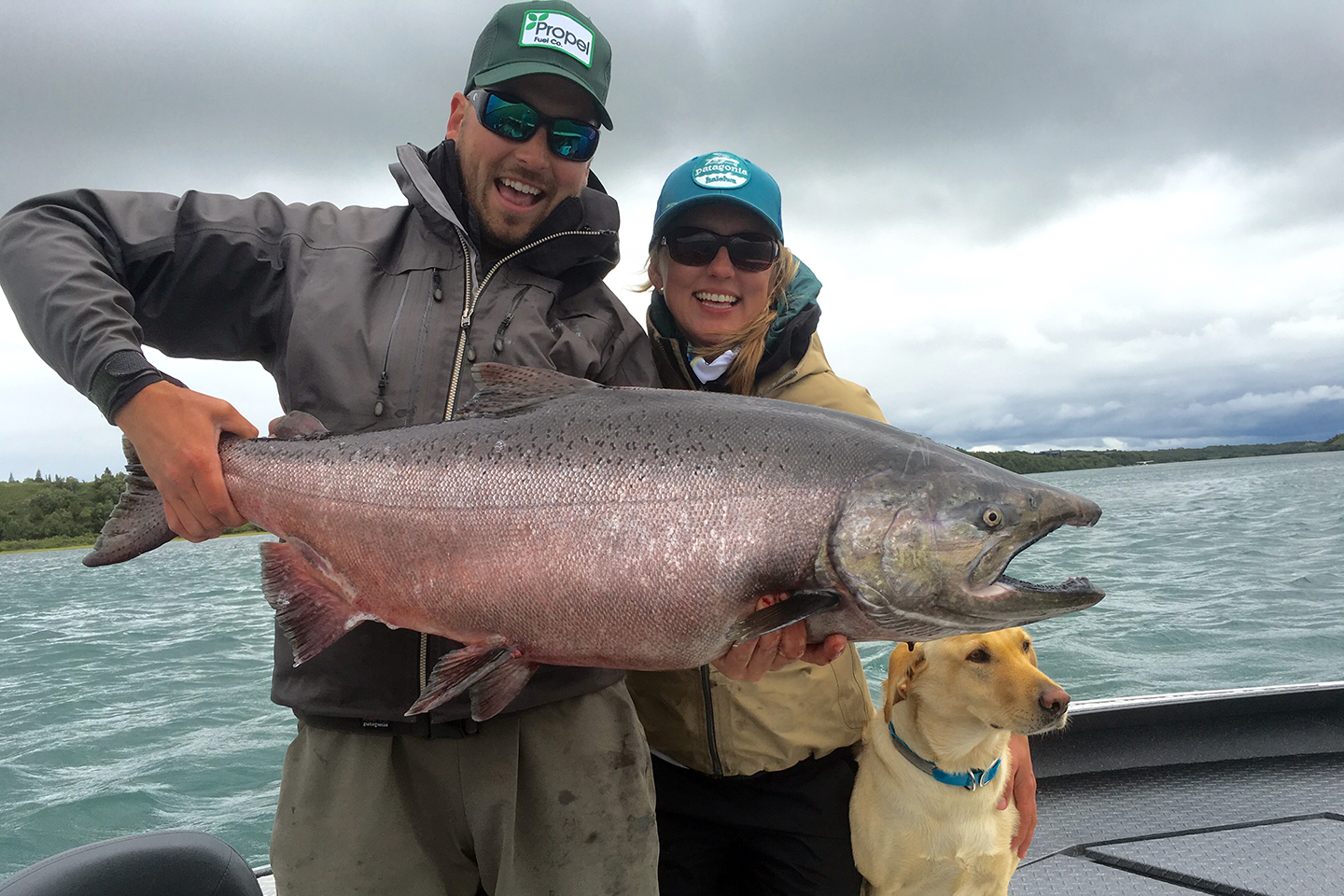Introduction

Arctic char and salmon are two cold-water fish varieties that are often compared due to their similarities in flavor and nutritional value. While both are popular among chefs and home cooks, it is important to understand the distinct differences between these fish species when making a choice. This article provides an overview of the physical characteristics, habitat and distribution, nutritional value, flavor profile, and environmental impact of Arctic char and salmon. By exploring these differences, readers can make informed decisions when incorporating these fish into their culinary choices.
Overview Of Arctic Char And Salmon
Arctic char and salmon are two popular cold-water fish species that are often compared due to their similar qualities. Both are highly regarded for their delicate flavor and nutritional value. However, there are distinct differences between these fish varieties. Arctic char, a member of the salmon family, is known for its reddish-orange color and mild taste. On the other hand, salmon comes in various species and can vary in flavor and texture, ranging from rich and fatty to lean and firm.
Importance And Popularity Of Cold-water Fish Varieties
Cold-water fish varieties, such as Arctic char and salmon, are highly valued for their importance in both culinary and health contexts. These fish are known for their delicate flavors and high nutritional value, including being rich in omega-3 fatty acids. Due to their popularity, they are widely sought after by consumers and chefs alike. The demand for cold-water fish has also contributed to the development of sustainable fishing practices, ensuring the long-term viability of these species and their habitats.
Physical Characteristics

Arctic char and salmon have similar body shapes, but there are distinct physical differences between the two varieties. Arctic char tends to be smaller in size compared to salmon and has a more elongated body shape. They also have a slightly forked tail and a more pointed snout. These differences in physical characteristics contribute to the unique appearance of each fish, further distinguishing them from one another.
Appearance And Color Variations
The physical appearance and color variations of Arctic char and salmon distinguish them from each other. Arctic char typically has a more elongated body shape and a slightly forked tail, while salmon has a more streamlined body shape and a square or slightly forked tail. In terms of color, Arctic char can range from pale silver to dark reddish-brown, while salmon can vary from silvery to vibrant shades of red and pink. These distinct color variations contribute to the unique and visually appealing qualities of each fish. [7][8]
Size And Weight Differences
Arctic Char and Salmon exhibit differences in terms of size and weight. Typically, Arctic Char is smaller in size compared to Salmon. On average, Arctic Char can range from 15 to 40 inches in length and weigh between 1 to 15 pounds. In contrast, Salmon can grow larger, with lengths ranging from 20 to 40 inches and weights varying from 2 to 60 pounds, depending on the species. These variations in size and weight contribute to the culinary versatility and presentation possibilities of each fish. [9][10]
Habitat And Distribution

Arctic Char are primarily found in cold water habitats across the northern hemisphere, including the Arctic, subarctic, and alpine regions. They are commonly found in lakes and rivers, but can also be found in coastal waters. On the other hand, Salmon have a wider distribution and can be found in both the Pacific and Atlantic oceans, as well as the Arctic Ocean. They are known for their migratory behavior and are found in various freshwater and marine environments. [12]
Preferred Environments Of Arctic Char
Arctic Char are primarily found in cold water habitats across the northern hemisphere, including the Arctic, subarctic, and alpine regions. They are commonly found in lakes and rivers, but can also be found in coastal waters. These fish prefer clear, oxygen-rich waters with rocky bottoms and ample vegetation. They are well-adapted to survive in extreme conditions, such as low oxygen levels and freezing temperatures. Arctic Char are known for their ability to thrive in pristine and undisturbed environments, making them an indicator species for the health of freshwater ecosystems. [13] [14]
Typical Habitats Of Salmon
Salmon are commonly found in various habitats throughout the northern hemisphere. They prefer freshwater environments such as rivers and streams for spawning and rearing purposes. However, they also spend a portion of their life cycle in the ocean. Salmon are known for their ability to navigate long distances, often swimming upstream against strong currents to reach their spawning grounds. They are particularly abundant in regions such as Alaska, the west coast of Canada, and the Great Lakes, where they have access to both freshwater and saltwater habitats. [16]
Nutritional Value And Health Benefits

When it comes to nutritional value, both Arctic Char and Salmon are rich in essential nutrients. They are excellent sources of high-quality protein, omega-3 fatty acids, vitamin D, and B vitamins. These nutrients are essential for promoting heart health, brain function, and reducing inflammation in the body. Additionally, the omega-3 fatty acids found in both fish varieties can help lower the risk of chronic diseases such as heart disease and diabetes. Incorporating Arctic Char or Salmon into your diet can provide numerous health benefits and contribute to a well-balanced and nutritious eating plan. [17][18]
Nutritional Profile Of Arctic Char
Arctic Char is known to have a highly nutritious profile. It is an excellent source of high-quality protein, delivering all the essential amino acids required by the body. In addition to protein, Arctic Char is rich in omega-3 fatty acids, which promote heart health, reduce inflammation, and support brain function. It also contains significant amounts of vitamin D and B vitamins, contributing to overall well-being. Incorporating Arctic Char into your diet can provide a wide range of necessary nutrients and contribute to a healthy and balanced eating plan. [19]
Health Benefits Associated With Consuming Salmon
Salmon is a powerhouse of nutrients that offer numerous health benefits. It is an excellent source of omega-3 fatty acids, which have been linked to reducing the risk of heart disease, promoting brain health, and reducing inflammation in the body. Salmon is also rich in vitamin D, which supports bone health and immune function. It contains high-quality protein, essential minerals like selenium and potassium, and vitamins such as B12 and B6. Adding salmon to your diet can help improve overall health and well-being. [22]
Flavor Profile And Culinary Uses

Arctic Char boasts a mild and slightly sweet flavor that is often compared to a cross between salmon and trout. Its firm and flaky texture makes it versatile for various cooking methods, such as grilling, baking, or pan-searing. It pairs well with citrus, dill, and other light seasonings. Salmon, on the other hand, has a rich, buttery flavor and a tender, flaky texture. It is commonly enjoyed grilled, baked, or smoked, and is a popular choice for sushi and sashimi. Both Arctic Char and Salmon offer culinary options that can satisfy any seafood lover’s palate.
Taste And Texture Of Arctic Char
Arctic Char boasts a mild and slightly sweet flavor that is often compared to a cross between salmon and trout. Its firm and flaky texture makes it versatile for various cooking methods, such as grilling, baking, or pan-searing. It pairs well with citrus, dill, and other light seasonings. Salmon, on the other hand, has a rich, buttery flavor and a tender, flaky texture. It is commonly enjoyed grilled, baked, or smoked, and is a popular choice for sushi and sashimi. Both Arctic Char and Salmon offer culinary options that can satisfy any seafood lover’s palate. [25]
Versatility In Cooking Salmon
Salmon is highly versatile when it comes to cooking methods. It can be grilled, baked, broiled, pan-seared, or even poached. The rich, buttery flavor of salmon makes it a delicious choice for various culinary preparations. It can be marinated in a variety of sauces and seasonings or simply seasoned with salt and pepper for a more subtle taste. Salmon also works well in salads, sushi, and as a topping for pasta or rice dishes. Its versatility allows chefs and home cooks to explore different flavors and cooking techniques, making it a popular choice for any occasion. [28]
Environmental Impact And Sustainability

When considering the environmental impact and sustainability of fish varieties, Arctic Char tends to have a lower environmental impact compared to Salmon. The farming of Arctic Char is often considered more sustainable due to its lower water usage and lower requirements for feed compared to Salmon. Additionally, Arctic Char aquaculture practices focus on minimizing the release of waste and maintaining water quality. On the other hand, the farming of Salmon can lead to negative environmental impacts such as pollution from fish waste and the use of antibiotics and chemicals. It is important to consider these factors when making choices about consuming fish and supporting sustainable fishing practices. [30]
Sustainable Fishing Practices For Arctic Char
Sustainable fishing practices for Arctic Char are crucial to ensure the long-term viability of this fish species. Some sustainable practices include:
- Responsible aquaculture: Arctic Char farms prioritize minimizing environmental impacts, such as water usage and waste management.
- Alternative feeds: Farms are exploring the use of more sustainable feed sources, such as plant-based diets, to reduce the dependency on wild fish for feed.
- Monitoring and regulation: Strict regulations and monitoring systems help prevent overfishing and ensure sustainable harvest levels.
- Habitat conservation: Protecting the natural habitats and spawning grounds of Arctic Char is essential for their long-term survival.
- Collaboration and research: Ongoing research and collaboration between scientists, fishermen, and regulatory bodies contribute to the development of sustainable fishing practices for Arctic Char.
These practices contribute to the preservation of Arctic Char populations and help maintain the ecological balance of their habitats.
Environmental Considerations Regarding Salmon
Salmon face several environmental considerations that need to be taken into account. One of the main concerns is the impact of salmon farming on the surrounding ecosystems. Escaped farmed salmon can interbreed with wild salmon populations, leading to genetic pollution. Additionally, the use of antibiotics, pesticides, and chemicals in salmon farms can have negative effects on water quality and the overall health of the aquatic environment. Overfishing is also a significant environmental concern, as it can lead to population decline and disrupt the balance of marine ecosystems. It is important to implement sustainable fishing practices and responsible aquaculture methods to mitigate these environmental impacts and ensure the long-term sustainability of salmon populations.
Conclusion

In conclusion, Arctic Char and Salmon are two distinct cold-water fish varieties with contrasting characteristics. Arctic Char is known for its milder flavor and light pink or red spots, while Salmon has a stronger, fishier taste and darker spots. Both fish have their own nutritional benefits and culinary uses. When choosing between the two, individuals should consider their personal preferences and environmental impact. Regardless of the choice, it is important to support sustainable fishing practices to ensure the long-term sustainability of these fish populations.
Contrasting Characteristics Of Arctic Char And Salmon
Arctic Char and Salmon have distinct characteristics that set them apart. Arctic Char tends to be smaller and has a more elongated body shape compared to the larger size and broader body of Salmon. They also have different tail shapes, with Arctic Char having a slightly forked tail while Salmon has a more rounded tail. Additionally, Arctic Char has light pink or red spots, whereas Salmon has darker spots. These physical differences contribute to the unique identity of each fish species.[37][38]
Factors To Consider When Choosing Between The Two Fish Varieties
When deciding between Arctic Char and Salmon, there are several factors to consider.
- Taste preference: Arctic Char has a mild and slightly sweet flavor, while Salmon has a richer and more pronounced taste.
- Nutritional needs: Arctic Char contains higher levels of omega-3 fatty acids and carotenoids, making it a good choice for those looking for these health benefits.
- Availability and cost: Salmon is more widely available and often less expensive compared to Arctic Char, which may be a consideration for some.
- Sustainability: Consider the environmental impact and sustainability practices associated with each fish variety.By considering these factors, individuals can make an informed decision based on their personal preferences and priorities.
Frequently Asked Questions about Arctic Char vs Salmon
Q: What is the difference between arctic char and salmon?
A: Arctic char and salmon are both cold-water fish that belong to the same family, but they have some distinct differences. While they share some similarities in taste and appearance, they differ in habitat, life cycle, and taste nuances.
Q: Where do arctic char and salmon live?
A: Arctic char is primarily found in the Arctic and subarctic regions of the world, including Canada, Alaska, and parts of Europe. On the other hand, various salmon species can be found across both the Atlantic and the Pacific Ocean. While some salmon species are also found in Arctic waters, they are more widespread and abundant in other areas.
Q: What are the color and appearance differences between arctic char and salmon?
A: Arctic char and salmon can both have vibrant colors, but there are some distinguishing features. Arctic char typically has a pink or red color, occasionally with light-colored spots on its body. Salmon, on the other hand, can range from a silver-gray color to a deep red or pink, depending on the species and stage of its lifecycle.
Q: How does the taste of arctic char compare to salmon?
A: Arctic char has a delicate and mild flavor that is often described as slightly sweet, with a buttery texture. Its flavor is similar to salmon but tends to be less “fishy.” Salmon, depending on the species, can have varying taste profiles ranging from mild and buttery to rich and full-bodied.
Q: Can you substitute arctic char for salmon in recipes?
A: Yes, arctic char can often be substituted for salmon in recipes. Due to their similar flavors and textures, the two fish are often interchangeable. However, keep in mind that arctic char has a slightly more delicate texture, so be cautious when cooking to prevent overcooking.
Q: Are arctic char and salmon equally healthy?
A: Both arctic char and salmon are highly nutritious. They are excellent sources of protein, omega-3 fatty acids, and essential minerals. However, the precise nutritional composition may vary between different species and their habitats. Generally, both fish are considered a healthy choice for incorporating into a balanced diet.
Q: Are there any major environmental concerns regarding arctic char and salmon fishing?
A: Both arctic char and salmon fishing can have environmental implications. Overfishing and improper farming practices can impact wild populations and damage ecosystems. When purchasing char or salmon, it is essential to choose sustainably sourced options that prioritize responsible fishing methods and sustainable aquaculture practices.
Q: Can you eat arctic char and salmon raw, like sushi or sashimi?
A: Yes, both arctic char and salmon can be consumed raw, provided they are fresh and properly handled. Sushi and sashimi made with these fish are popular delicacies. However, it is crucial to ensure that the fish is sourced from safe and reliable suppliers to reduce the risk of foodborne illnesses.
Q: Are there any noticeable price differences between arctic char and salmon?
A: Generally, arctic char tends to be relatively more expensive than salmon. This can be attributed to several factors, including its limited availability due to habitat restrictions and the higher costs associated with its production in aquaculture. However, prices can vary depending on the location, season, and market demand.

A small, independently run fish and chip shop using quality ingredients cooked freshly in our kitchen to ensure great tasting food. All of our drinks are in glass bottles, and all of our takeaway packaging is recyclable or compostable to help reduce our impact on the environment.